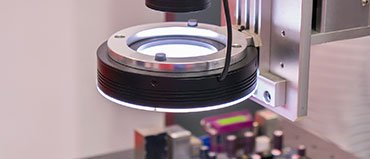Robotic Vision Market Expected to Reach USD 4.0 Billion by 2028, Driven by Automation and 3D Vision Advancements
[City, Date – September 12, 2024] – The Robotic Vision market is poised for significant expansion, projected to grow from USD 2.6 billion in 2023 to USD 4.0 billion by 2028, according to a new report. This represents a compound annual growth rate (CAGR) of 9.1%.
The increasing demand for automation across industries, coupled with the advanced capabilities of 3D vision systems, are cited as major factors propelling this market growth. 3D vision technology is enabling robots to perform a wider range of tasks without requiring extensive reprogramming, making them more versatile and efficient.
Smart Cameras Fueling Growth
A key driver identified in the report is the rising adoption of smart cameras in robotic vision systems. These compact and easily programmable cameras offer a compelling alternative to more complex PC-based systems. Smart cameras provide robust processing power and are increasingly incorporating features like embedded systems, MIPI interfaces, image pre-processing, and onboard FPGAs. Their integrated nature, including storage, digital I/O, and industrial communication interfaces, simplifies integration and programming, often at a lower cost compared to PC-based alternatives. Industries with challenging environments, such as those with messy or dusty workspaces, are particularly well-suited for smart camera implementation. Pharmaceutical and food & beverage sectors are early adopters of this technology.
Awareness and Skilled Workforce Remain Challenges
Despite the strong growth forecast, the report highlights some restraints. Limited awareness of robotic vision systems, especially in developing countries, is hindering wider adoption. In regions like India, industrial robots and advanced vision systems are primarily used in larger industries like automotive and metals, with less penetration in smaller sectors. The need to educate end-users about the benefits of robotic vision is crucial. Furthermore, a shortage of skilled professionals capable of programming and managing these vision systems poses a challenge, particularly in developing countries and even in North America and Europe.
Customization Opportunities and Complex Programming Challenges
The increasing demand for robotic vision is also driving a trend towards greater customization. Industries like automotive assembly, food packaging, medical device manufacturing, and pharmaceuticals are seeking tailored robotic vision solutions to meet stringent quality demands. Collaborative robots and customizable vision sensors are gaining traction as manufacturers seek flexible automation platforms.
However, programming complex inspection tasks remains a significant challenge. Traditional robotic vision systems rely on rule-based algorithms that can struggle with unpredictable defects or variations. Identifying cosmetic anomalies and dealing with factors like lighting and surface textures can be difficult. The food & beverage industry, for example, faces challenges in using vision systems to consistently identify defects in natural products like potatoes. The development of AI-based software solutions is anticipated to address some of these more complex inspection challenges in the future.
Market Ecosystem and Regional Growth
The report indicates that the 3D vision systems segment is expected to experience the highest CAGR during the forecast period (2023-2028) due to advancements in technology, increased accuracy, and broader applications in various industries. Similarly, the software segment is also projected for high growth, driven by the integration of Artificial Intelligence (AI) in robotic vision software, particularly deep learning, which enhances object recognition capabilities. The food & beverages industry is expected to be the fastest-growing sector in terms of adoption of robotic vision.
Regionally, Asia Pacific is identified as the largest and fastest-growing market for robotic vision, fueled by its position as a major manufacturing hub and the rapid economic growth of countries like China, Japan, and South Korea.
Key Market Players
Major companies in the Robotic Vision market include Cognex Corporation (US), Basler AG (Germany), OMRON Corporation (Japan), National Instruments Corporation (US), Keyence Corporation (Japan), Teledyne DALSA (Canada), Sick AG (Germany), Torvidel AS (Norway), Hexagon AB (Sweden), Advantech (Taiwan), Yaskawa America, Inc. (Japan), ISRA VISION (Germany), FANUC CORPORATION (Japan), ABB (Switzerland), and Qualcomm Incorporated (US). These companies are actively pursuing strategies like product launches, collaborations, and acquisitions to strengthen their market position.
Recent Industry Developments
Recent activity in the market includes Cognex Corporation’s launch of the Advantage 182 vision system in May 2023, designed for complex identification, classification, and inspection tasks, and the In-Sight 3800 Vision System in April 2023, aimed at high-speed production lines. Teledyne DALSA also released Sapera Vision Software Edition 2023-03 in March 2023, featuring updates to its AI training and image processing tools.

Leave a Reply